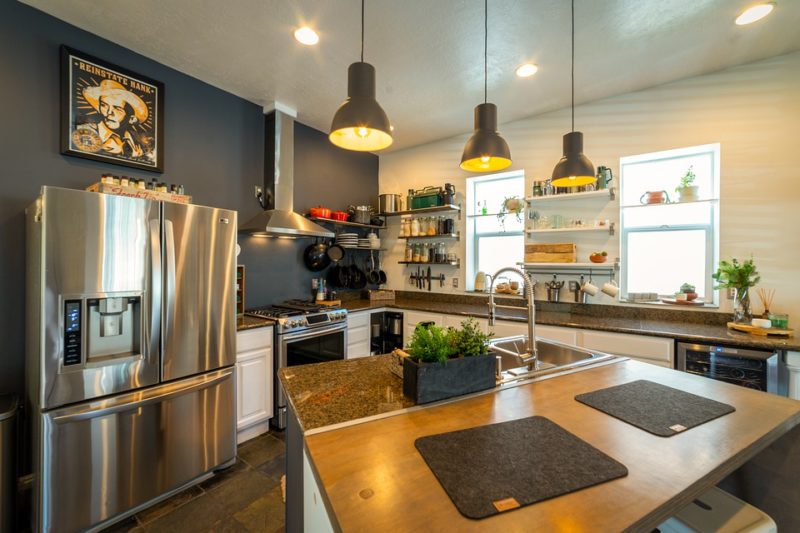Do you wish to know how to measure a fridge? This article will assist you in estimating a fridge so let’s get started reading this article. To correctly measure a fridge, you’ll have to see the existing one’s depth, breadth, and height.
Allow for several inches of breathing space for good ventilation and enough area for the fridge doors to be wide open. At the same time, the standard size of a fridge differs due to the type of fridge (bottom fridge, upper freezer, French door, and side-by-side).
The regular fridge measurements range from 29 ¾ to 38 ¾ inches wide, 62 ¾ to 72 ¼ inches tall, and 28 ¾ to 34 ⅝ deep, with depth elongating to 45 inches with the fridge door entirely ajar. Fridge typically varies from 20 to 25 in terms of cubic feet. Well, this is just an overview; there are a few things you need to consider for measuring a fridge, so keep reading this article.
Tips To Measure A Fridge
When measuring a fridge, it’s not about counting the appliance’s specifications as it is about gauging the area it takes up. To calculate such measurements, perform the following actions and learn how to measure a fridge.
#1. Calculate its width
Measure the width beneath the top cabinets between counters, walls, closets, and baseboard trims at the bottom. To ensure that the new fridge would fit in the area, choose the lowest of these measures when shopping.
#2. Calculate fridge height
When there is available space over the fridge, measuring the height isn’t essential, but it is if there are cabinets directly over it. If this is the case, measure from the floor to the bottom of the top cabinets. It was good to take measurements first from the floor towards the front of the top cabinets and from the ground to the rear. If the cabinets are not square, you’ll have the lowest measurement.
You may also be interested to know about refrigerator height problems.
#3. Allow for breathing space
To minimize overheating, fridges require a sufficient area for optimal ventilation. Although the exact space required varies by maker, most versions will need at least 18 inches on both sides of the refrigerator, 1 inch above this, then 2 inches between the wall and the back of the fridge.
#4. Considerations for doors and drawers
It is also a good idea to consider any potential obstacles that could prevent you from fully opening the gates or stretching any pull-out shelves in the space between the fridge. The inadequate area between the edge of the fridge, its door hinges on, and the nearest cabinet and the wall will prohibit the entry from opening wide enough for pull-out shelves, which need the fridge door to allow at least 90 degrees.
Provide 2 to 2.5 inches of room between such two places as a general guideline to enable the door open widely enough. This value must be factored into all the ends of the fridge for French or side-by-side doors. If a fridge door doesn’t open wide sufficient, you may generally adjust by moving it further away from the fence for more hinge space.
#5. Entrance pathway calculation
Along with making sure the fridge would fit in the area, it’s supposed to, you’ll like to make sure you can get it into the door or pass any hurdles on the way to its ultimate resting place. Choosing the shortest route possible is advisable, avoiding sharp twists, tiny corridors, and stairwells. Try to measure the width of the door closest to the kitchen because this will be the path’s entrance point.
If indeed the width of this door appears to be too small based on the width of the fridge area, measure the width of nearby doors until you locate one that will fit the fridge. When a door isn’t quite broad enough but is only an inch or two short, try pulling the door off its hinges to widen the entrance. Sliding doors provide the most entry points and may be a viable alternative if available.
It may seem self-evident, but your old refrigerator must be uninstalled from the area before installing the new one.
#6. Measure the fridge
When looking for a fridge, it’s recommended to use a tape measure to personally measure the units you’re evaluating rather than depending on the manufacturer’s specs. Cross-reference the size of the fridge area with the teams you’re considering.
Consider the following factors: The height of a door hinge should be taken into consideration because it can add one inch to the total size of the refrigerator. While measuring the depth of the fridge with the doors closed, remember to include the doorknobs on the front. With the doors open at 90 degrees, count the total depth of the refrigerator. Take measurements of any drawers that pull out.
It’s A Wrap!
Learning the measurement of the fridge is relatively easy, and we are happy that you have learned how to measure a fridge. The tips mentioned above are the speedy method to measure the fridge accurately. Thank you, friends, for reading this article till the end. You may also want to read about what causes a fridge to leak water and how many amps does a fridge use.

